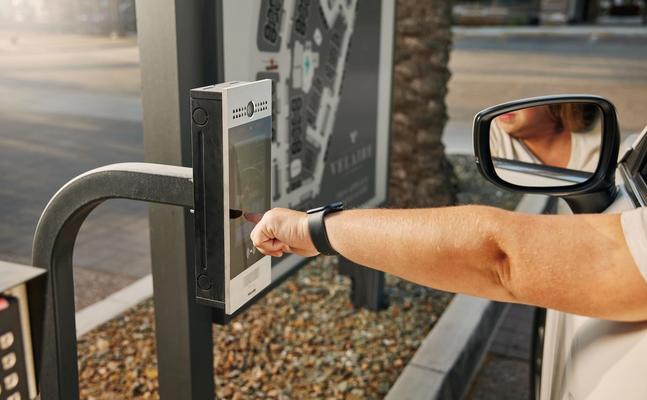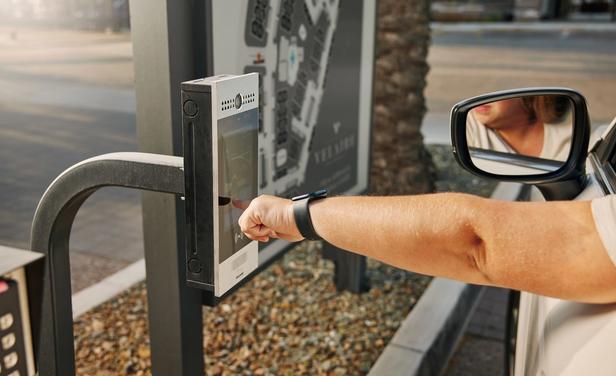In the fast-paced world of multifamily property management, staying ahead means embracing solutions that simplify operations and enhance resident experience. That's where cloud access control comes in. Imagine effortlessly managing access across your entire portfolio, from anywhere, without the headaches of traditional on-premises systems.
Cloud-based door access control is rapidly transforming how properties operate, offering unprecedented flexibility and control. We're seeing a significant shift, with more and more operators recognizing the power of cloud-based access control systems to streamline operations and deliver peace of mind. Instead of dealing with costly hardware and complex installations, you gain a scalable, user-friendly platform that adapts to your evolving needs.
This move isn't just a trend; it's a strategic advantage, allowing you to reduce operational costs, improve efficiency and ultimately, provide a more seamless living experience for your residents. By leveraging the cloud, you're not just securing your properties, you're building a foundation for smarter, more responsive management.

What is cloud access control?
Cloud access control is a security solution that allows property owners, operators and site teams to manage and monitor building entry remotely through an internet-connected platform. Unlike traditional on-premises systems that require local servers and extensive hardware, cloud-based access control operates via secure cloud servers, enabling real-time updates, remote access management and seamless integration with other security systems.
By leveraging the cloud, owners can centrally manage access permissions across multiple locations, enhancing security while reducing IT and infrastructure costs. This shift toward cloud-based solutions is driven by the need for advanced security, better data analytics, and the flexibility to adapt to changing business needs. Additionally, cloud solutions provide real-time scalability, allowing operators to expand access control as their operations grow—without costly hardware upgrades.
Key features of cloud access control systems
Cloud access control systems come with a range of features designed to enhance security and operational efficiency, including:
Centralized access management
With cloud-based access control, administrators can manage user permissions, track access events and adjust security settings across multiple properties from a single dashboard. This centralized approach simplifies security management, especially for organizations with multiple sites. Additionally, automated access provisioning ensures that employees, residents and vendors receive or lose access as needed without manual intervention.
Real-time monitoring and alerts
Cloud-based systems provide real-time visibility into who is entering and exiting a property. Security teams receive instant alerts for unauthorized access attempts, ensuring quick responses to potential threats. Additionally, audit logs track access history, helping organizations maintain compliance with security regulations. Some cloud access systems also integrate with AI-powered analytics to detect unusual access patterns and automatically trigger security measures.
Scalability for growing businesses
One of the most significant advantages of cloud access control is its scalability. As portfolios expand, new locations and users can be added without significant investments in new infrastructure. Cloud systems are designed to grow with a property, making them a future-proof solution for evolving needs. Owners no longer need to worry about costly hardware installations when scaling operations, as cloud-based systems allow for easy remote updates and configurations.
Enhanced security with encryption and authentication
Cloud-based access control employs advanced encryption and multi-factor authentication (MFA) to protect sensitive data and prevent unauthorized access. Unlike traditional systems that rely on physical keys or standalone card readers, cloud solutions integrate robust cybersecurity measures to reduce security vulnerabilities. Some systems also support biometric authentication, adding an additional layer of security for high-risk facilities.
Seamless integration with other security systems
Modern cloud access control platforms integrate easily with video surveillance, alarm systems and building management tools. This interoperability allows for a more comprehensive security strategy, where access events trigger automated responses, such as locking down a facility or activating surveillance cameras in real time. On-site teams can also use cloud access control to generate comprehensive security reports that provide insights into access trends and vulnerabilities.
Benefits of transitioning to cloud access control
Owners and site teams adopting cloud-based access control experience several key benefits:
Lower upfront and maintenance costs
Traditional access control systems require expensive on-site servers, wiring and dedicated IT teams for maintenance. Cloud solutions eliminate these costs, relying on cloud servers maintained by service providers. Updates and system enhancements occur automatically, reducing the need for costly manual upgrades. The subscription-based pricing model of most cloud solutions also allows teams to predict and control costs more efficiently.
Remote access and management
With cloud-based access control, security administrators can grant or revoke access from anywhere, using a mobile app or web portal. This capability is particularly beneficial for property managers overseeing multiple locations, ensuring access permissions are always up to date. Remote management also allows for temporary access provisioning, making it easier to accommodate contractors or short-term residents without physical key exchanges.
Improved compliance and reporting
Businesses in regulated industries must maintain strict access logs and security protocols. Cloud-based systems generate automated reports, ensuring compliance with security standards such as GDPR, HIPAA and SOC 2. These detailed audit trails help organizations demonstrate regulatory adherence and improve risk management. Additionally, real-time reporting dashboards provide security teams with actionable insights to enhance operational efficiency.
Enhanced user experience
Cloud-based access control enhances convenience for employees, residents or visitors by enabling touchless entry, mobile credentials and automated visitor management. These features reduce friction in accessing buildings while maintaining high security standards. Residents of multifamily properties, for example, can enter buildings, manage guest access and even integrate with smart home features all through a single mobile app.

Best practices for implementing cloud access control
Transitioning to a cloud-based access control system requires thoughtful and careful planning. Here are some best practices that can help ensure a smooth implementation:
Assess security needs and objectives
Before choosing a solution, owners and operators should evaluate their specific security requirements, including the number of access points, user roles and integration needs. Understanding these factors helps in selecting the right cloud access control provider. Conducting a security audit before implementation can help identify gaps and ensure the system meets business objectives.
Prioritize cybersecurity measures
Since cloud access control involves sensitive data, it’s crucial to choose a provider that offers strong encryption, regular security updates and multi-factor authentication. These measures help to protect against cyber threats and unauthorized access. Additionally, organizations should establish strict user authentication protocols to prevent credential-based attacks.
Train staff and users
Effective implementation involves training both employees and end users on how to use the system. Providing clear guidelines on access management policies helps to ensure that security protocols are followed consistently. Additionally, interactive training sessions and user-friendly documentation can help accelerate adoption and reduce errors.
Monitor and optimize system performance
After deployment, operators should continuously monitor system performance and user feedback. Regular audits help identify areas for improvement, ensuring the system remains efficient and secure. Advanced analytics can provide key insights into system usage trends, enabling organizations to fine-tune access policies and enhance security measures.
Traditional vs. cloud-based access control: A comparison
Traditional access control:
Hardware costs: High, due to the need for on-site servers and extensive wiring.
Scalability: Limited by the capacity of physical hardware.
Remote management: Not available; requires on-site presence.
Security updates: Manual updates are required, often leading to delays and potential vulnerabilities.
Integration: Limited ability to integrate with other security systems.
Cloud-based access control:
Hardware costs: Low, as it leverages cloud-based infrastructure.
Scalability: Easily scalable to accommodate business growth.
Remote management: Offers full remote access via web or mobile applications.
Security updates: Automatic updates are provided by the vendor, ensuring the system is always up-to-date.
Integration: Seamless integration with other security and building management systems.
Best practices for implementing cloud access control
To ensure a smooth transition, owners and operators should assess their security needs and objectives before selecting a cloud access control system. Evaluating the number of access points, user roles and integration requirements helps identify the best solution. Conducting a security audit before implementation can reveal vulnerabilities and ensure the system aligns with business goals.
Prioritizing cybersecurity measures is essential, as cloud access control involves handling sensitive data. Selecting a provider with strong encryption, regular security updates and MFA helps protect against cyber threats and unauthorized access. Organizations should also establish strict user authentication protocols to mitigate credential-based attacks.
Training staff and users is another critical step in successful implementation. Providing clear guidelines on access management policies ensures compliance and security best practices. Interactive training sessions and user-friendly documentation help employees and end users quickly adopt the new system.
Ongoing system performance monitoring and optimization allow businesses to refine access policies and enhance security measures. Regular audits help identify potential improvements, while advanced analytics provide valuable insights into system usage trends.

The future of access control: Embracing cloud-based security
As technology advances, cloud access control will continue to evolve with AI-driven analytics, enhanced biometric authentication and increased automation in access control management. Organizations that invest in cloud-based security solutions today will be well-positioned to adapt to future security challenges while maintaining operational efficiency.
For multifamily owners and operators looking to enhance security, streamline operations and future-proof their properties, transitioning to cloud access control is a strategic move. Learn more about how SmartRent’s cloud access control solutions can help your organization stay ahead of security trends. Book a demo today to get started.

